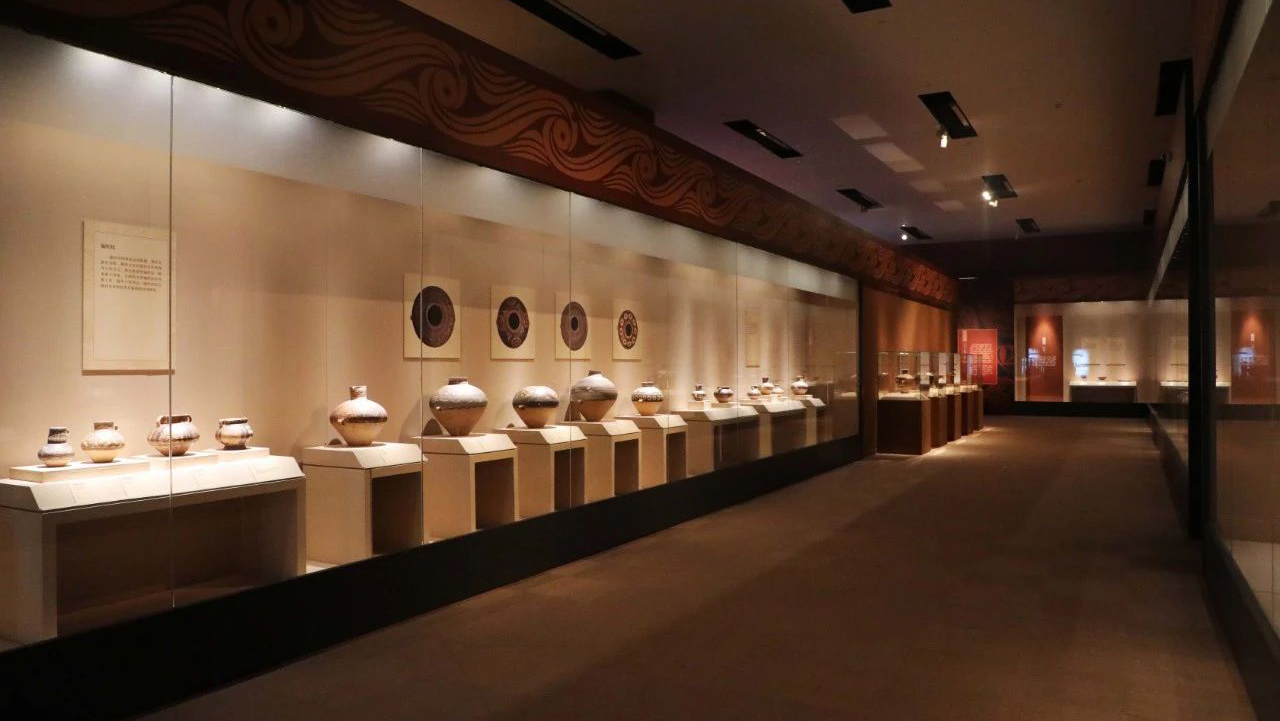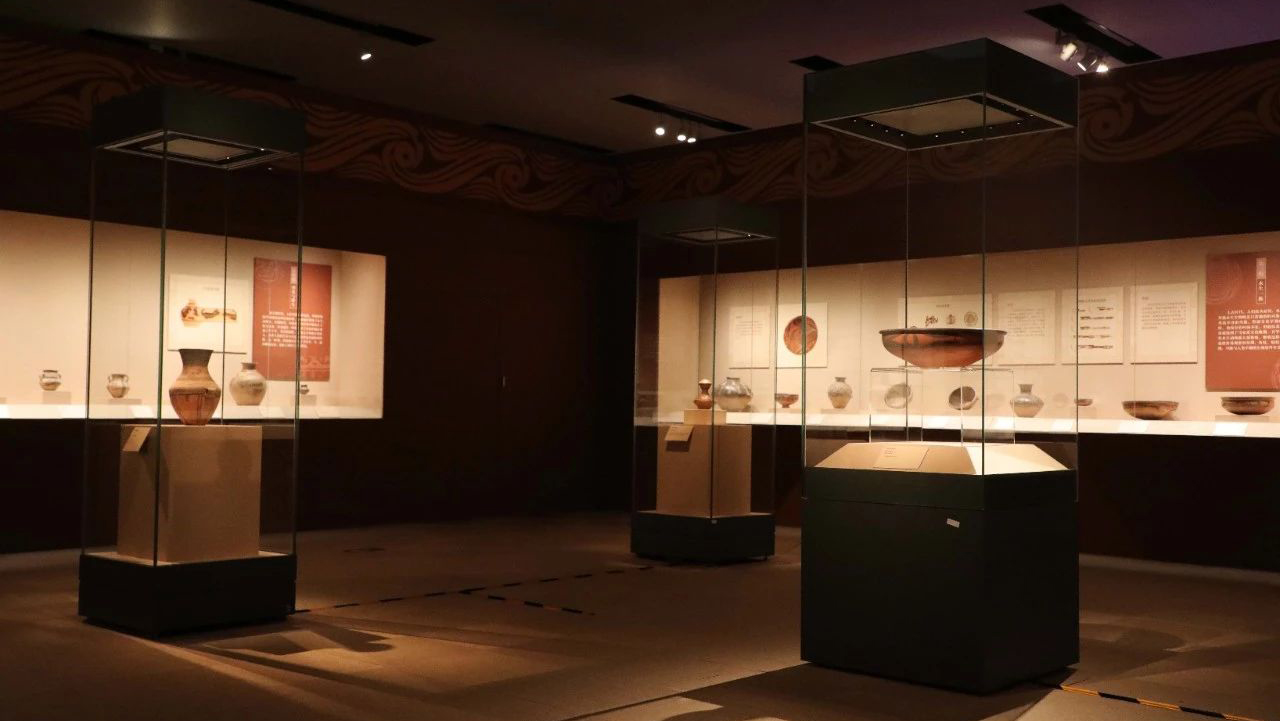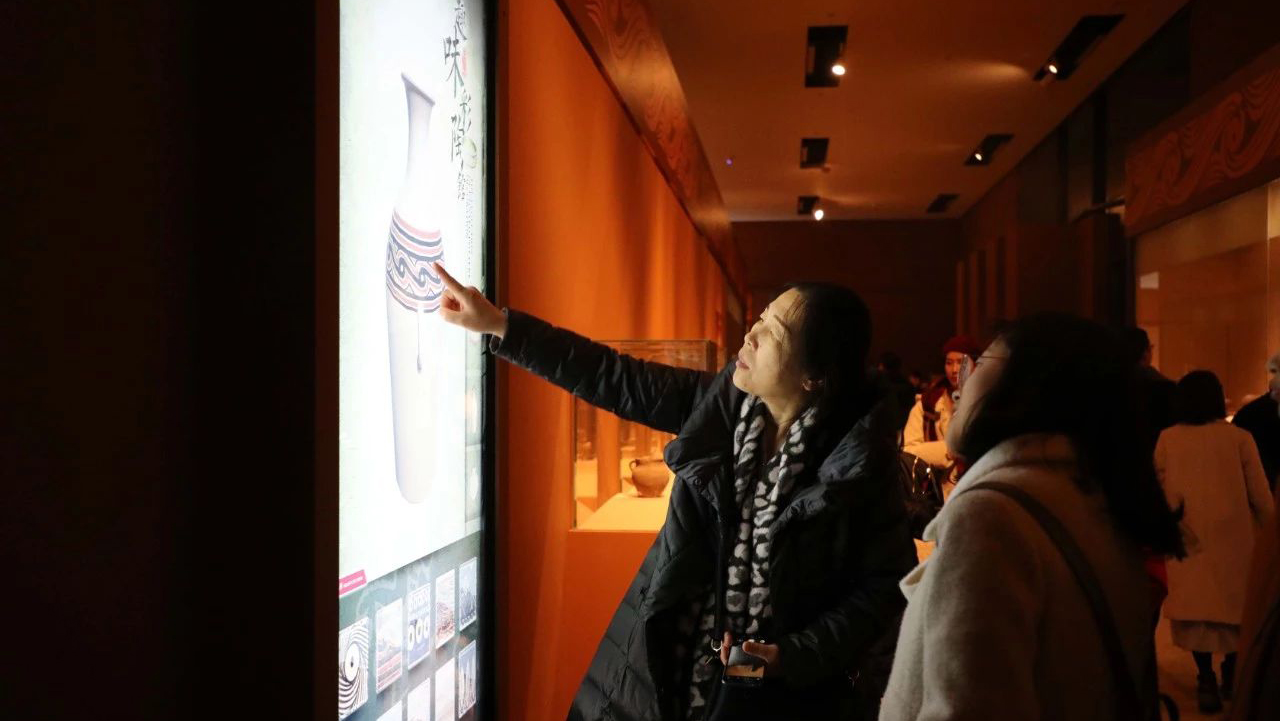Mankind invented pottery about 10,000 years ago. As pottery-making technology became increasingly mature, our ancestors living in the basins of China’s Qiantang River and Wei River produced the earliest painted pottery works around 8,000-9,000 years ago. Later, painted pottery appeared widely in the Neolithic cultures in the areas along the Yellow River, Liao River and Yangtze River, with the most developed in the upper reaches of the Yellow River in Gansu Province, forming a distinctive painted pottery culture.
Painted pottery is a type of pottery made by applying mineral pigments to a billet and firing it to create colored patterns that do not fade over time, thus preserving much of the art works of ancient China. The early peoples of Gansu used natural objects such as plants, animals and rivers, as well as human beings themselves, as the subject matter, and created many patterns with rich decorative effects like geometric designs, swirling designs, plant designs, animal designs, dance designs and deity designs. The combination of elegant shapes, various colors and gorgeous compositions reflects the social life, religious culture and aesthetic sensibilities of these ancient peoples, and bears witness to the magnificent and colorful nature of early Chinese art. The painted pottery in Gansu represents the very source of China’s decorative art, creating the splendor of painted pottery art in ancient times, laying a solid foundation for the formation of ancient Chinese culture and making a remarkable contribution to the emergence of a pluralistic Chinese civilization.
The National Museum of China, in collaboration with the Gansu Provincial Bureau of Cultural Heritage, the Gansu Provincial Museum and 13 other museological and cultural organizations, have organized “An Exhibition of Painted Pottery Art from Gansu Province,” which features approximately 200 pieces of exquisite prehistoric painted pottery, covering various themes such as cultural background, painted pottery production, styles and genres, natural objects and spiritual life. Many of these potteries are on display to the public for the first time. They constitute a collection of fine prehistoric pottery from the upper and middle reaches of the Yellow River, fully demonstrating the richness, longevity, brilliance and splendor of the prehistoric civilization of the Yellow River basin.



